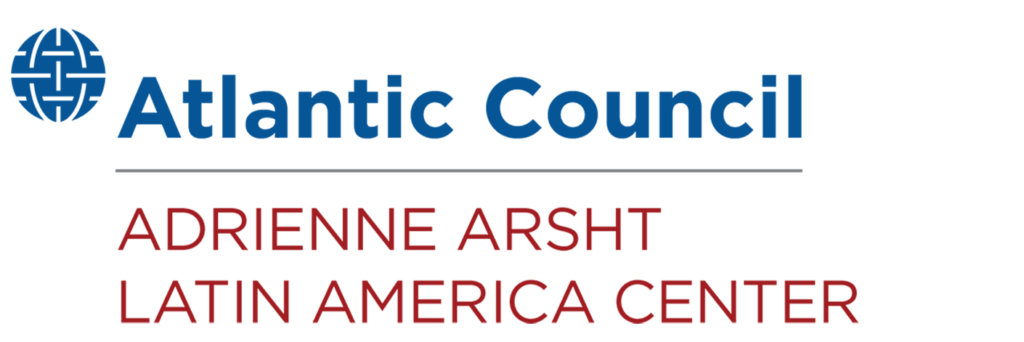Unlocking economic development in Latin America and the Caribbean: Five opportunities for private-sector leadership and partnership
Table of contents
Executive summary
How does the private sector perceive Latin America and the Caribbean (LAC)? What opportunities do firms find most exciting? And what precisely can companies do to seize on these opportunities and support the region’s journey toward recovery and sustainable development? To answer these questions, the Atlantic Council collaborated with the Inter-American Development Bank (IDB) to glean insights from its robust network of private-sector partners. Through surveys and in-depth interviews, this report identified five vital opportunities for the private sector to drive socioeconomic progress in LAC, with sixteen corresponding recommendations private firms can consider as they take steps to support the region.





Introduction
Latin America and the Caribbean stand at a pivotal moment. Hard hit by the pandemic in 2020, the region managed an impressive rebound in 2021 on the back of successful vaccination campaigns and historically intensive fiscal support.1Stimulus in LAC was smaller in size compared to advanced economies, but larger than the stimulus in LAC provided during previous crises However, new uncertainties began to emerge by late 2021. LAC’s growth slowed to 3.5 percent in 2022, and is expected to further weaken to 1.7 percent in 2023.2“World Economic Outlook Report April 2023: A Rocky Recovery,” International Monetary Fund, April 2022, https://www.imf.org/en/Publications/WEO/Issues/2023/04/11/world-economic-outlook-april-2023
Inflationary pressures, rate hikes in both LAC and advanced economies, spillovers of the war in Ukraine, tightening fiscal positions, and still-high debt levels have dampened the regional macro-outlook.3Eduardo Cavallo, et al., “From Recovery to Renaissance: Turning Crisis into Opportunity,” Inter-American Development Bank, April 2023, https://flagships.iadb.org/en/MacroReport2022/From-Recovery-to-Renaissance-Turning-Crisis-into-Opportunity. In addition, countries face structural micro-level vulnerabilities—such as rigid and informal labor markets and low productivity—which made LAC the slowest-growing region globally from 2014–2019 and the region worst affected economically by COVID in 2020.4“GDP Growth (Annual %)—Sub-Saharan Africa, Middle East & North Africa, Latin America & Caribbean, Europe & Central Asia, East Asia & Pacific, European Union, South Asia, North America,” World Bank, last visited January 24, 2023, https://data.worldbank.org/indicator/NY.GDP.MKTP.KD.ZG?end=2019&locations=ZG-ZQ-ZJ-Z7-Z4-EU-8S-XU&start=2007. LAC had the lowest gross domestic product growth (by percentage) among regions every year from 2014–2019 except 2017, when it was .1 percentage points higher than the Middle East/North Africa.
The above challenges—coupled with a lingering pandemic, a global food crisis and energy crunch, and the effects of climate events—are testing public finances and institutions. Much is at stake as governments seek to better serve the needs of their economies and societies. From sustaining the ongoing recovery against short-term headwinds to boosting inclusive, productive, and sustainable development in the long term, governments cannot, and should not, do it alone.
In this context, the Atlantic Council’s Adrienne Arsht Latin America Center (AALAC) has partnered with the Inter-American Development Bank (IDB) to highlight the critical role of the private sector in supporting growth and improving lives in LAC. By working directly with IDB’s robust network of multinational private-sector partners through surveys and interviews, AALAC identifies and spotlights five opportunities whereby the private sector can drive economic prosperity, sustainable development, and social progress in LAC.
- Enhancing market size, scalability, and regional integration. The private sector can strengthen the hard and soft infrastructures supporting the region’s economies, while drawing them closer together through trade, regulatory, and other integration.
- Accelerating digitalization and innovation. The private sector can improve infrastructure, foster skills, and promote adoption to help the region transform its digital potential into development gains.
- Improving state governance, institutional capacity, and transparency. Technological, governance, and other cooperation between the public and private sectors can enhance institutional capacity, integrity, government-service delivery, and regulatory quality in LAC.
- Addressing multidimensional inequality. Private-sector actions to reduce gender inequality, level the playing field between SMEs and large firms, narrow the urban-rural divide, and prepare for global shocks will enable a more prosperous, inclusive economy for LAC.
- Meaningfully advancing the green agenda. Private firms can help advance the green agenda by working to create green jobs, taking measures to promote a transition to a circular-economy model, and partaking in green finance.
In each opportunity area, the report provides recommendations private firms should consider to maximize their own roles in the region’s recovery and continued development, as well as by working through partnerships with the public sector. To inspire ways forward, such recommendations are accompanied by concrete, actionable examples of successful private-sector leadership and partnerships.
Where applicable, the report also introduces relevant, complementary policy recommendations for the public sector by drawing primarily on research of the Americas Business Dialogue (ABD), a private-sector initiative facilitated by the IDB. ABD leverages the insights of more than four hundred companies to develop, disseminate, and support the implementation of sound public-policy recommendations.
Partnerships at the IDB
The report is the product of a close collaboration between the Atlantic Council and the IDB. The IDB is the leading source of development financing for Latin America and the Caribbean, with a long track record of working in partnerships with the public, private, nonprofit, philanthropic, and academic sectors. Through its Office of Outreach and Partnerships (ORP), created in 2008, the IDB has managed to cultivate a robust network of partners, including private-sector firms dedicated to supporting the region’s development in partnership with the bank. The Atlantic Council engaged more than one hundred of these firms as part of the report-building process.
The IDB works with its private-sector partners in many ways, focusing largely on: capturing financing from partners to complement its operations in the region; mobilizing pro-bono knowledge, innovation, and technological solutions from partners that can generate impact in the region, in line with its institutional strategy; and engaging in knowledge sharing, dialogue, networking, and other activities through high-level partnership platforms. To date, the IDB Group has mobilized close to $52 billion from 500+ partners from the private, public and philanthropic sectors, including $5.91 billion in 2022.
Special feature: Private-sector perception of LAC
In addition to identifying the five opportunities of private-sector-led growth in LAC, this report provides a helpful snapshot of business attitudes toward the region, through a series of surveys and interviews conducted in May and July 2022 (see methodology in Annex A). Survey respondents—private-sector partners of the IDB—are predominantly multinational companies and represent fifteen sectors. Seventy-nine percent of these companies operate in two or more LAC countries and 65 percent employ more than four hundred people in the region. The survey yields two salient insights.
The first of these insights is that business leaders perceive the region through a spectrum of optimistic and pessimistic lenses. In brief, survey respondents are almost exactly split on whether the overall business and investment environments in LAC have improved over the last decade. The optimists, which make up 49 percent of respondents, consider the environments to be friendlier or much friendlier than in the past, whereas the pessimists (the other 51 percent) see stagnation or even deterioration in these conditions (Figure 1). Interestingly, the two groups are not defined by discernible differences in terms of the industries or subregions in which they operate, or in the demography of the respondent.
The optimism-versus-pessimism dichotomy reflects more than just two contrasting views of the region’s past trajectory. Rather, dissecting survey responses by optimists and pessimists reveals their respective underlying perspectives on LAC’s strengths and weaknesses—and, implicitly, their disagreements and surprising agreements. For example, while optimists are more hopeful about, and place greater emphasis on, LAC’s digital and innovation potential than the pessimists, optimists fully concur with pessimists that governance and institutions are top challenges facing LAC.
Comparisons like this—see numerous “additional survey insight” boxes throughout the report—add more nuance to the analysis, as well as the resulting, forward-looking recommendations. Although perceptions are hard to change, progress in the five opportunity areas outlined below will be key to tipping the balance of optimism and pessimism in LAC’s favor. This is important because perceptions guide decision-making: perceived risks and weaknesses can undercut investment, while a shift toward more optimistic views of the region can do the opposite.
Second, the survey displays a more favorable perception of LAC than common wisdom or an “international observer” might suggest. On one hand, reputable international assessments of business friendliness and competitiveness— conducted by organizations such as the Economist Intelligence Unit, the World Economic Forum, and the Institute for Management Development—tend to place LAC in the bottom half of all countries.5“EIU Global Outlook—a summary of our latest global views,” Economist, June 15, 2022, http://country.eiu.com/article.
aspx?articleid=532192036&Country=United+States&topic=Economy&subto_1; “World Competitiveness Ranking,” International Institute for Management Development, last visited
January 24, 2023, https://www.imd.org/centers/world-competitiveness-center/rankings/world-competitiveness; “The Global Competitiveness Report 2019,” World Economic
Forum, 2019, https://www3.weforum.org/docs/WEF_TheGlobalCompetitivenessReport2019.pdf. On the other hand, our survey respondents—including the pessimists—see LAC as slightly more attractive than the global average (see Figures 2 and 3 below). 6Question 6 asked “On a scale of 1 to 5, where 1 = best of all regions and 5 = worst of all regions, how would you rank LAC for its attractiveness and competitiveness compared
to other global regions?” The mean ranking for attractiveness is 2.7, where three means the respondent thinks the region average globally. For competitiveness, the mean is 2.9.
See Figures 2 and 4 below. Despite the potential positive bias of our multinational survey respondents toward LAC, it offers hope that they suggest—in a global context—that LAC may have more to offer than meets the eye.
To further explore such varied perceptions of LAC, the report compares LAC to other regions through objective metrics, where applicable. More importantly, an obvious takeaway is that, going forward, the region needs to lower its “barriers to entry” and make its opportunities more accessible to everyone, whether knowledgeable observers or those who do not necessarily possess a deep understanding of local conditions. Effective and constructive public-private collaboration and dialogues, including those undertaken in preparation for this report, will be indispensable to rallying international optimism and attention in specific countries, and in the region in general.

Overview of key opportunities
Conclusion
When asked to identify the main social impact of their companies, survey respondents cited myriad promising areas. Unsurprisingly, the most commonly cited was economic growth and job creation (72 percent), as shown in Figure 11 a few pages ago. But LAC needs companies to consider their contributions far beyond output and employment, especially with the region confronting a number of additional short-term uncertainties and structural socioeconomic obstacles. As evidenced by concrete examples throughout the report, many firms have undertaken commendable efforts and rethinking in this regard. But more can be done. Going forward, the private sector would do well to step up as a leader—and a partner for the public sector—in boosting development, equity, resilience, and sustainability in LAC. This report explored how the private sector can rise to this challenge in a systematic and actionable way, through sixteen recommendations across five concrete opportunities (summarized below). Additionally, it explained why doing so also benefits firms, for those less convinced of the cause (or less optimistic about the region). This is particularly critical to further galvanizing private sector interests at a time when pandemic-induced scarring and other ongoing economic headwinds have eroded corporate revenues and suppressed cumulative investment in certain sectors.7“Healthier Firms for a Stronger Recovery: Policies to Support Business and Jobs in Latin America and the Caribbean,” Inter-American Development Bank, August 2022, https://publications.iadb.org/en/healthier-firms-stronger-recovery-policies-support-business-and-jobs-latin-america-and-caribbean. Even with fewer resources available, however, companies can make an impact through well-designed day-to-day operations, strategies, special programs, and partnerships. Finally, the private sector cannot, and should not, do it alone. The report highlighted success stories and the overall importance of multistakeholder partnerships (public-private, private-multilateral, private-civil society, etc.), as a way to complement private-sector actions and amplify developmental impact. On that note, this conclusion section offers some final thoughts and additional insights on how to stimulate public-private partnerships in particular, as well as the critical role of the multilateral sector to advance partnerships and private-sector-led development.
Special feature: Maximizing the potential of public-private cooperation
In addition to the private-sector opportunities and recommendations summarized above, the report showcased scores of successful partnerships with the private sector that helped magnify developmental impact. As governments pursue and expand these partnerships, a central question remains: how to ensure these partnerships are successful. The answer varies greatly depending on the nature of the collaboration (e.g., co-financing an infrastructure project versus developing vocational training with private-sector expertise). Nevertheless, insights from our survey shed light on this. See Figure 12 below.
Firms most commonly cited the two following factors as necessary for successful collaboration with the public sector: regulatory, procedural, and legal clarity (70 percent), and integrity and trustworthiness (70 percent). The next tier of requirements was related to the attributes of specific collaborations themselves: economic viability (60 percent), skilled counterparts (56 percent), and effective negotiation (54 percent).
Here again, interesting differences appeared between our survey’s optimists and pessimists. The latter—who showed greater skepticism of government institutions—are more likely to prioritize regulatory and legal frameworks and engage with trustworthy and honest counterparts. Optimists, meanwhile, focused more on the specifics of a given collaboration (in particular, economic viability). See Figure 13 below.
Ultimately, as with all relationships, successful public-private cooperation in pursuit of recovery and sustainable development in the region will depend on a shared vision for success, a clear sense of what each partner brings to the table, trust and communication, transparency and honesty, and a shared belief in the unique potential of multistakeholder partnerships to improve lives in the region.
Special feature: The role of the multilateral sector
Multilateral actors have a critical role to play in these partnerships. Indeed, many interviewees, including Telefonica, pointed to the multilateral institutions as key partners that can help private actors unlock their full potential to support the region’s development.
First, multilateral entities bring profound sectorial, country, and development expertise to partnerships. This knowledge helps ensure partnerships are designed in line with country and sector needs, that they respond to the realities on the ground, and that they are soundly implemented and carefully monitored to maximize impact.
Second, multilaterals are trusted partners of governments, civil-society actors, and private firms, and therefore can serve as a bridge connecting these diverse actors. This is particularly relevant in LAC, where trust in the public and private sectors is low, and where mistrust is a significant obstacle to development.8Keefer and Scartascini, Trust, 7 As an honest broker, multilaterals can unlock progress and prosperity by convening and building trust among public, private, and civil-society actors, and by opening the hearts and minds of local partners and beneficiaries to the ways in which private-sector partnerships can improve the region’s environmental, social, and economic wellbeing. A salient example here is IDB’s leadership in convening public-private dialogue, through platforms like the Americas Business Dialogue, on diverse topics of strategic development importance. These dialogues have effectively fostered public-private-multilateral ties in the region and involved nontraditional stakeholders, such as MNCs, in the region’s development journey.
Third, multilaterals can play a supporting role to empower partnerships with the private sector, even without being directly involved in the partnerships themselves. For example, they can partner with governments to provide anchor investments or de-risking facilities that may crowd in the private sector. Their support of private-sector operations with a meaningful development impact creates significant demonstration effects for other private firms to follow. Their commitment to fostering domestic private-sector development lays the groundwork for private firms to thrive, generating opportunities for future partnerships.
Such financial and technical assistance is particularly important in today’s uncertain economic and political context. On one hand, multilaterals are well positioned to act as countercyclical lenders during credit crunches and other crises. On the other hand, the multilaterals’ focus on the long-term growth and competitiveness agenda helps induce similar behavior in the public and private sectors, which helps overcome certain short-termism (for example, caused by elections, protests, or political polarization) potentially counterproductive to ultimate development goals.
Finally, multilaterals are also well placed to extract and disseminate the lessons generated from partnerships and use them to inform future partnerships and public policymaking—an essential component and objective of this collaborative report between AALAC and IDB. Moreover, their robust government ties, network of stakeholders, and in-country presence facilitates the exchange and cross-pollination of know-how across different geographies and industries. Like MNCs, many multilaterals have extensive coverage and memberships across LAC. The IDB, for example, has physical presence across twenty-six countries in the region.
Annex
Acknowledgements
To sustain the ongoing recovery against short-term headwinds and boost inclusive, productive, and sustainable development in the long term, governments cannot, and should not, act alone. In this context, the Atlantic Council is providing timelier-than-ever insights to highlight the critical role of the private sector in supporting growth and improving lives in Latin America and the Caribbean. As part of this broader effort, this report identifies five opportunities whereby the private sector can drive economic prosperity, sustainable development, and social progress in the region.
This report is a collaborative undertaking with the Inter-American Development Bank (IDB). We would like to thank the IDB for supporting this project financially and substantively. More than a dozen IDB colleagues, led by those at the Office of Outreach and Partnership (ORP), provided inputs and facilitated connections that helped inform this report.
Thank you to the nine private-sector stakeholders and experts who dedicated their time to provide thoughtful insights through one-on-one interviews: Helga Flores Trejo (Bayer), Florence Pourchet (BNP Paribas), Angela Maria Zuluaga (Coca-Cola), Eleonora Rabinovich (Google), Karim Lesina (Millicom), Felipe Rincon (Mastercard), Alejandro Moran Marco (NTT DATA), Alfonso Gomez (Telefonica), and Silvia Constain (Visa). We would also like to thank Reuben Smith-Vaughan (Amazon) for his input and comments. Many more participated in an anonymous survey that fed into this report. All participants were senior executives of multinational corporations that operate in Latin America and the Caribbean and are development partners of the IDB.
Finally, we would like to thank our Adrienne Arsht Latin America Center colleagues Eva Lardizábal and Jacob Kaufhold for their excellent research, writing, and coordination support; and Jeff Fleischer, Donald Partyka, and Anais Gonzalez for their editing and design support.
We are also grateful for the analytical contributions of Paul Kielstra, our survey consultant.
Jason Marczak
Senior Director, Adrienne Arsht Latin America Center, Atlantic Council
Pepe Zhang
Senior Fellow, Adrienne Arsht Latin America Center, Atlantic Council
Annex A: Methodology
A collaborative effort between AALAC and IDB, this report drew on insights from direct, structured consultations with key private sector stakeholders familiar with and active in LAC through: an anonymous survey conducted in May and June 2022; nine one-on-one, in-depth interviews with senior executives in June and July 2022; and additional input in particular from the ABD, an IDB-led initiative that houses and produces public-policy recommendations in collaboration with more than four hundred companies and associations.
Survey: To better understand the private-sector perspective on the opportunities facing LAC, AALAC and IDB invited their private-sector partners to participate in an anonymous online survey, hosted on Survey Monkey. Fifty-five individuals completed the questionnaire in late May and late June 2022. The questions, developed jointly by AALAC and IDB, covered areas including: recent and likely future evolution of LAC’s business environment, how LAC compares with other global regions, top attractions and barriers of doing business in LAC, the socioeconomic role and contributions of private firms in regional recovery and development, and ways to enhance private-sector partnerships with governments and multilateral organizations.

Survey respondents were predominantly multinational firms operating in LAC. The mean number of each company’s employees in the region is more than four hundred, with more than three-quarters having more than two hundred (see Figure 14, above). Consistent with such size, these businesses typically operate across the region. On average, surveyed companies are active in nine LAC countries. Seventy-nine percent of them operate in more than one sub region of LAC: South America, Central America, and the Caribbean. Respondents’ firms are also distributed across a wide range of sectors—fifteen in total—with the most common being information technology (15 percent), financial services (15 percent), and automotive (11 percent).
Interviews: In June and July 2022, AALAC conducted one-on-one interviews with nine senior executives from IDB’s network of private sector partners representing several industries: Bayer, BNP Paribas, Coca-Cola, Google, Mastercard, Millicom, NTT Data, Telefonica, and Visa. These qualitative interviews complemented the survey by delving deeper into specific issues relevant to the report and of private sector and partnership interest. Full-length interviews were published on the Atlantic Council’s website as part of its Experts of the Americas series.
ABD: The report also benefited from insights from the Americas Business Dialogue, in particular its 2022 report of policy recommendations. ABD carries out a sustained high-level exchange between LAC governments and companies, and acts as the private sector consultation mechanism for the Summit of the Americas. The opinions expressed in ABD recommendations are those of ABD members, and do not necessarily reflect the views of the IDB, its board of directors, or the countries it represents.
Additional input: Finally, the report benefited from technical inputs of IDB teams working closely with the private sector, including: Climate Change & Sustainable Development Sector (CSD), Department of Research & Chief Economist (RES), Infrastructure & Energy Sector (INE), Institutions for Development Sector (IFD), Integration & Trade Sector (INT), Social Sector (SCL), IDB Lab, and IDB Invest. The report was produced and coordinated by the Office of Outreach and Partnership (ORP) on the IDB side, and the AALAC on the Atlantic Council side.
Building on the above resources and additional research, AALAC and the IDB identified five areas of opportunity for accelerating growth and development in LAC through the private sector and partnership, which were used as the foundation for the report.
Annex B: ABD Recommendations
The report drew on recommendations facilitated by the Americas Business Dialogue (ABD). For ease of navigation, this table summarizes where ABD recommendations were used and included the text of the original recommendations.

Interviews
Related event

The Adrienne Arsht Latin America Center broadens understanding of regional transformations and delivers constructive, results-oriented solutions to inform how the public and private sectors can advance hemispheric prosperity.





